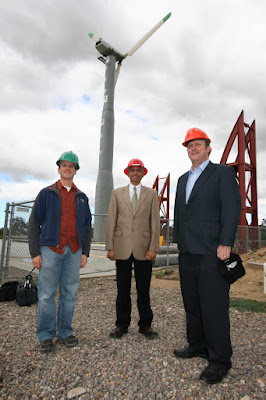Dear Reporters and fellow
PIOs at
AAAS 2010,
If you are in San Diego for
AAAS, that means you're in the convention center, and that means that if you venture out of the convention center/hotel/reception
bubble you are in danger of eating overpriced and underwhelming food. Sure, there are lots of receptions with free appetizers and snacks. But if you are looking to leave the Convention Center vortex for a bit of fresh air and non-reception food (just briefly, lest Ginger
Pinholster get nervous!), I have a few ideas for you. (Leave comments with additional ideas and thoughts on these ideas.)
City Beat puts out guides for eating downtown for Comic Con, and these guides are good primer on eating near the San Diego convention center...even you are not a comic book nut.
Comic Con 2009 food near the San Diego convention center.
Comic Con 2008 food near the San Diego convention center.
Update FridayFeb 19: There is a grass-fed burger place O'Brothers in the mall near the convention center.
Yelp has more info here. I can't vouch for how fast the service is, and their veggie burger is too fried for my taste.
If you only sneak away once from the convention center for food, go to the
Little Italy farmers market on Saturday. Where? ( The intersection of Date St. and India St. in downtown San Diego.) It's walking distance or a very short cab or tram ride from the Convention Center.
If you are eating in the
Gaslamp, La
Puerta is one place to consider...it's close to the convention center and also a spot to enjoy a cold one. Check out a
recent review from City Beat by Candice Woo.
Check out all of Woo's San Diego restaurant reviews here. A quick scan will give you some quick perspective on the San Diego restaurant landscape.
Update Friday AM: More thoughts on eating in San Diego. If you are on foot, consider a place on G called
Neighborhood. (Check it out on Yelp...but IMHO be wary of the Yelp reviews of the places in the
Gaslamp.)
Also on G, but
pricer is
Cafe Chloe.
North Park (not walking distance from Convention Center)If you are cabbing it w/ some friends, consider North Park. Here is a North Park restaurant blog:
http://the2line.blogspot.com/ For local/sustainable seafood in San Diego (in North Park) check out
Sea Rocket Bistro. If you go, I suggest the grilled sardines appetizers and whatever the catch of the day is.
For sustainable sausage (grass fed /
humane(ish) meat) in North Park, the only place is
The Linkery (but they are packed on peak dinner hours on the weekend. go early. go late.)
For a great cheese plate and fun atmosphere (props to Stacey the owner!...who I only know from being a customer), saunter up to the bar at
Ritual Tavern (also in North Park).
And if you are looking for a place to observe some colorful humane plumage, check out the all-sexual-orientations-colors-ages
karaoke bar in North Park called
Redwing.
























